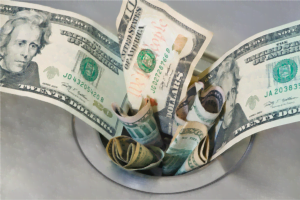From the Spring 2023 Journal of the Colorado Dental Association
 It’s no surprise to small business owners that more and more consumers are paying for goods and services with debit and credit cards rather than cash.
It’s no surprise to small business owners that more and more consumers are paying for goods and services with debit and credit cards rather than cash.
Data from the Federal Reserve shows that cash payments in 2020 declined sharply among consumers in every age group, and especially in two groups that consistently made the highest share of cash payments–those aged 18-24 and those age 65 and older–due in part to making fewer in-person purchases during the height of the pandemic.
Dental offices have long accepted card payments to boost sales, improve cash flow and offer convenience to patients. But, without a vigilant management strategy, credit card processing fees can add up and affect your bottom line.
“The first thing every practice should do is calculate its effective rate,” said Phil Nieto, president of Best Card, a company that provides credit card processing solutions to thousands of dental offices and is endorsed by the CDA and ADA.
“Your effective rate tells you your total average cost to run cards,” said Nieto. “It’s easy to calculate. Grab your latest monthly statement and divide the dollar amount of processing fees you were charged by the total amount of monthly sales. Based on our 2022 comparisons, the average rate dental offices pay is 3.38%, but you should be shooting for a rate closer to 2.1-2.2%.” For example, if your office paid $1,027.45 to run $37,355.25 in card sales, your calculation would look like this: $1,027.45 ÷ $37,355.25 = 2.75%.
Is your effective rate too high? There are a lot of different factors that affect how much you might be paying in fees, and processors can add or raise fees anytime if they provide you with a 30-day notice in small print at the bottom of your monthly statement.
“Changing providers or renegotiating are ways to save a lot of money but once you have a great deal, there are also some steps you and your staff can take to bring your costs down,” Nieto said.
- Accept payment directly from the patient in person via chip, contactless, or swipe whenever possible to get a lower rate than keying in those same cards. Because there is less risk of fraud with the patient and card present, lower fees are charged.
- If you are going to manually enter a card number or have a patient pay online, make sure to include the 5-digit ZIP code and the 3- to 4-digit card security code whenever possible. This is an anti-fraud check and if it passes you get a lower rate than if you don’t put in info or have the wrong info for the cardholder.
- Encourage patients to use a debit card instead of a credit card and avoid insurance payments made on credit cards. Since different cards run at different rates, any patient payments made with a debit card (no PIN required) should result in substantially lower fees than credit cards. On the other end of the spectrum, insurance payments made by credit card tend to be the most expensive types of cards.
Credit card processing fees can be complicated and confusing, which is why Best Card offers a free savings analysis to help explain your current fees and potential savings. Just email a recent credit card processing statement to compare@bestcardteam.com or fax to 1-866-717-7247. In 2022, Best Card helped 96% of practices pay less than their previous fees and the average savings per practice was more than $5,500.
For more information, go to bestcardteam.com.


